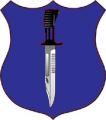
Originally Posted by
jcustis

This exchange reminded me of an important fact, and that was the degree of independent action expected from the troops on the ground. Because Fire Force operations required a very detailed synchronized ballet of air assault support, close air support, observations posts, paratroopers, and sweep and stop groups, independent action was not expected. In fact, it was more likely frowned upon. Much of the coordination was accomplished through the Mk. 1 eyeball, and restricting movement was a simple means of deconflicting the ever so dangerous geometry of fires.






 Reply With Quote
Reply With Quote




Bookmarks